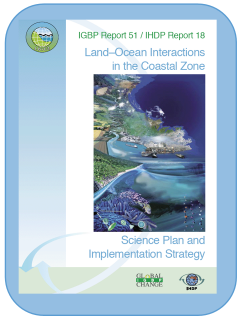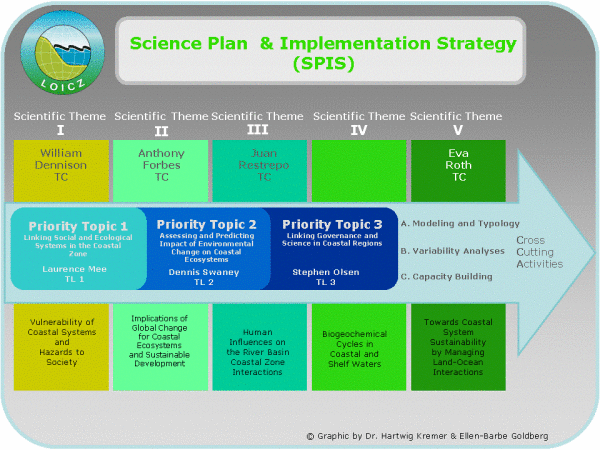Science Plan and Implementation Strategy
 Science Plan and Implementation Strategy
Science Plan and Implementation Strategy
The genesis of the LOICZ Science Plan and Implementation Strategy (SPIS) reflects coastal science at the crossroads. From the ‘Synthesis and Futures’ meeting held in Miami in 2002 to its transition to a jointly-sponsored IGBP/IHDP Core Project in 2004, LOICZ has opted to take the less traveled path, where interdisciplinarity and the science-policy interface are essential features of a holistic paradigm for the scientific study of the global coast. Building on its strengths of quantifying material fluxes and the role of coastal and shelf ecosystems in their biogeochemical transformations, LOICZ, for its second phase, has developed a scientific agenda that tightly couples the social-ecological systems as they interactively influence the biogeochemistry of carbon, nutrients and sediments along the catchment-coast continuum. In addition, it brings to center stage the vulnerabilities of both humans and ecosystems – given the anthropogenically-altered and changing state of the coast, and the mechanisms for mitigating these through defining sustainable future scenarios.
The LOICZ SPIS is without doubt ambitious and implementation will rely on broad global, regional and national communities of coastal scientists, policy makers and managers. As before, scientists can collaborate through site-specific research programs for in-depth process studies, as well as by conducting inter-site comparisons to validate modeling and quantitative estimates.
LOICZ is implementing a distributed organizational structure by establishing regional offices coordinated by an International Project Office. This will facilitate regional syntheses that complement Earth System-scale studies, and facilitate exchanges and links between national and regional science and policy communities.
 Spis Graphic
Spis Graphic





